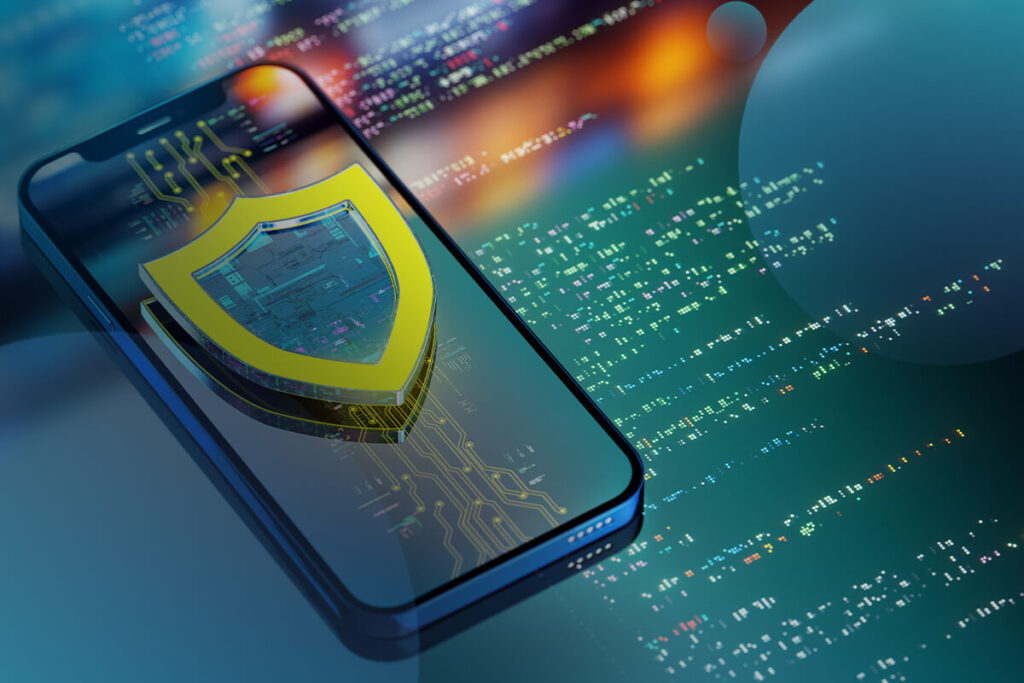
Welcome to Cybersecurity Awareness Month! This international effort is an excellent opportunity for experts to highlight emerging scams and risks and equip people with the knowledge and tools to defend against cyber threats. This month, let’s explore how AI solutions can address advanced threats in these four areas:
- Password security
- Phishing
- Network threats
- Protecting your environment
All of this may seem overwhelming, but hopefully I can help make it more interesting and entertaining!
First off, and no surprise, I am passionate about cybersecurity awareness, and I believe that everyone— from kids to colleagues and clients—needs to understand the constantly changing cybersecurity threats. Like others who focus on their jobs year-round, cybersecurity experts tirelessly safeguard the technology we all rely on.
Let’s get started!
Ditch the eight-character passwords; bigger is better!
A key strategy to protect your computers and data is using strong, unique passwords for each online account. Just as you don’t use one key for your car, house, office, bank, and deposit box, you shouldn’t use the same password everywhere. Right now, cybercriminals can rent powerful computers from online cloud-based services to crack short passwords quickly. In the future, AI will make their work even easier, which makes robust AI defensive solutions even more necessary.
Remember that strong, unique passwords are essential to:
- Enhance personal security: Using a stronger password significantly reduces the risk of hacking. There are free tools that can breach simple passwords almost instantly. A determined hacker equipped with rented hardware from services like Amazon, Microsoft, or Google can break an eight-character password in less than a second. NIST recommends a minimum of 15 characters for a truly strong password. While complexity—such as mixing upper- and lower-case letters, numbers, and special characters (like %*&?)—is no longer essential, incorporating such elements is still acceptable.
- Reduce your risk: Using a unique password for each account ensures that if one gets hacked, the others remain secure. Just like with different locks for your car, house, and office – losing your car keys doesn’t endanger your home or workplace.
- Prevent credential stuffing: Criminal groups often opt for the path of least resistance and expect you to do the same. Their strategy involves using stolen passwords from one website to gain access to accounts on other sites. Employing unique passwords effectively counters this attack method. By doing so, a single compromised password cannot jeopardize your multiple online accounts. This approach successfully stops criminals in their tracks, rendering their tactics ineffective against your accounts.
While I may have raised your concerns, I can also assure you that there are several methods to enhance security. One practical approach is to utilize AI solutions. These tools, which harness the power of AI as a force multiplier, provide you with an always-on, skilled, personal security expert that can:
- Detect weak passwords: AI tools can examine your identity and access management system (like Active Directory) to review your company’s passwords, identify those that are weak or frequently used, and notify you about the ones you need to strengthen.
- Identify possible breaches: AI tools can scan criminal websites for stolen credentials and data breach dumps, notifying you if your username and password surface online. The strength of these tools lies in their persistence: they operate continuously, never tire, never halt, and provide constant protection.
- Create strong passwords: It’s understandable that some individuals find it difficult to generate unique passwords. AI solutions can assist by producing strong, random passwords for you, eliminating the need to brainstorm them. These tools ensure each account has a distinctive password that adheres to all security requirements.
Read more: Integrating AI and cybersecurity: Emerging threats and strategies
Avoid falling for phishing attacks using AI Solutions
Now let’s discuss phishing and how to protect yourself against one of the most common and prevalent attack methods used by cyber criminals: Phishing e-mails.
Phishing e-mails are deceptive messages that cyber criminals use to trick you into revealing personal information—such as passwords or credit card details—by posing as someone you know, trust, or respect. Typical examples include an e-mail from your bank claiming there is an unusual charge on your ATM or credit card or a message from your e-mail provider (such as Gmail or Microsoft) warning that your account will be closed. In both scenarios, they aim to make you think you need to click the provided link and log in to what turns out to be a fraudulent site.
AI solutions have become highly effective at identifying these phishing attempts, swiftly analyzing thousands, even millions, of e-mails, and recognizing patterns that suggest a phishing attack. For instance, AI can detect AI-generated content, irregular conversation threads, spoofed domains, newly registered domains, or the specific formatting of an e-mail, and then flag it as potentially dangerous.
Always STOP and THINK before you click to avoid falling victim to a phishing scam. Here are a few tips to keep in mind:
- Heed the warning signs: Be immediately cautious of e-mails requesting personal or login details. Reputable companies rarely, if ever, seek sensitive information such as your username, password, social insurance number, date of birth, mother’s family name, or other personally identifiable information (PII) through e-mail. Cybercriminals take the path of least resistance; sending 10 million phishing e-mails costs them nothing, and even if only 0.1% of recipients respond, that’s still 10,000 potential victims.
- Verify the sender’s e-mail address: Pay attention to subtle misspellings or odd domains in the sender’s e-mail address, such as www.rbcroyal8ank.com. Additionally, inspect the sender’s e-mail username; it might appear as PrimeMinister@canada.ca, but when you hover over the address, does it show up as Jim12344@gmail.com or SueFisher@hotmail.com? If the address seems suspicious in any way, it’s likely an attempt to phish for your information.
- Inspect the links: Scammers can disguise links to appear genuine, but hovering over them with your mouse will reveal their true destination. For instance, check these two links:
- www.google.com goes to Google.
- http://www.google.com goes to Yandex.ru
- Enable multi-factor authentication (MFA): Your username identifies you online, and your password is the first authentication factor. Adding a second factor, like your phone number, makes it much harder for criminals to access your accounts. An SMS code sent to your phone provides extra security, even if your password is stolen. For better protection, use authentication devices, with FIDO2-compatible devices being a more secure option than SMS.
If you don’t do anything else I suggest here, turn on MFA. It may seem like a hassle, but in the end, it will make you a much less attractive target for criminals.
Read more: Remote working security risks: Safeguarding today’s workspace
Patches: An enduring solution for staying current and secure
Moving on to the third item on our agenda: ensuring the regular updating of both software and hardware.
Your computer or smartphone are like your house, where you lock your doors and windows and maintain them to ward off intruders, pests, and cold drafts. In the same way, securing and maintaining your devices is vital for safeguarding against cybersecurity threats. Regular software updates are one of the most effective measures for achieving this.
Software updates frequently contain patches that rectify vulnerabilities exploitable by hackers, akin to a door lock that a thief finds can be easily bypassed with a credit card—such an easily picked lock represents a vulnerability.
When developers identify such vulnerabilities in software, they produce patches to address them. Failure to install these updates is the same as leaving a window open or making an easily picked lock available to potential intruders.
Managing all these updates can become daunting, especially with multiple devices and applications. AI solutions can significantly mitigate this challenge by enhancing your cybersecurity stance. These AI tools can automatically detect which software requires updating and apply the necessary patches with minimal intervention from you and your team. It functions like having a security robot that perpetually checks your house for open windows and weak locks, addressing them as needed.
For instance, AI systems can scan your computer systems, identify outdated software—including operating systems and applications—and prioritize updates based on the severity of the associated vulnerabilities. Moreover, AI tools can schedule these updates during off-peak hours to minimize disruptions to your production environment. And while your IT team still needs to allocate time for patching, AI-enhanced solutions can help alleviate the burden on their overstretched resources. Utilizing these tools not only keeps your system secure but also ensures seamless company operations.
Regularly updating your computer hardware and software can lower the risk of cyberattacks by up to 70%, amounting to an easy and highly effective method to safeguard your organization’s critical systems.
Read more: Strengthen your IT security foundation with these patch management best practices
Rely on AI to help safeguard your networks and environment
With point number four, I will extend the scope of our discussion, because now you want to know whether AI solutions can help detect threats in your environment or on the dark web. Unsurprisingly, the answer is YES!
Think of a standard city as a metaphor for your company’s network—envision it as a lively city complete with traffic lights, stop signs, divided streets, highways, and security cameras assisting police officers in maintaining order. Just as a city protects its citizens from common human threats such as thieves, reckless drivers, and vandals, your organization needs similar security measures to safeguard against cybersecurity threats. This is where AI solutions come into play, acting as your digital police force to enforce the policies you have established for your company. By adhering to these policies, AI can streamline threat detection in impressive ways.
Firstly, AI can monitor network activity in real time, much like how a police officer observes traffic on a highway to identify law-abiding drivers versus those speeding or driving erratically. Trained AI tools can keep an electronic watch over all your network traffic, focusing on anything unusual or dangerous.
A subset of AI, known as machine learning (ML), can learn from patterns how to differentiate between legitimate and malicious traffic. Machine learning tools do not rest or tire and can learn at an incredible pace. Continuous real-time monitoring by machine learning is essential because criminals are relentlessly trying to breach your external assets and deceive your employees into clicking on malicious links. Cybersecurity attacks can occur at any moment, so a tool that monitors your network, external attack surfaces, and users to quickly identify these criminal activities is essential.
Machine learning analyzes patterns in network activity, aiding AI solutions in recognizing typical network behavior and comparing it with malicious or potentially harmful activity. For example, if your AI system detects a surge in data being sent to an unfamiliar IP address, it can flag this traffic as suspicious and trigger an alert. Imagine a highway patrol officer with the ability to spot a drunk driver from any mile marker instead of just the one where they’re stationed.
AI and machine learning become crucial for threat detection in your environment because together, they are capable of identifying unusual activities or anomalies. Anomalies serve as red flags for you and your security team, indicating that something may be wrong and warrants investigation. If an employee’s account suddenly starts accessing sensitive files at irregular hours, your AI tool can spot this anomaly and issue an alert. Picture a team of ninjas surveilling your network, servers, and workstations, seeking out trouble before it fully develops.
Another great example is how banks monitor transactions to detect fraudulent activities. By examining transaction patterns, ML and AI can identify unusual behaviors and notify the fraud team to act.
Read more: Strengthening the edge: The acceleration of MXDR, AI, and cybersecurity
Sleep more soundly with AI solutions in your corner
The ever-changing threat landscape of cybersecurity can seem daunting or overwhelming, causing some to consider abandoning the fight against such threats. However, there is no need for despair; AI can be your ally.
Consider a classic cybersecurity analogy: a castle. Imagine this castle contains your family and your most prized possessions, which you need to shield from invaders like Atilla the Hun or Viking raiders. Traditional defenses such as walls and moats will protect you to a point; what if a team of highly intelligent, vigilant guards and covert agents are also stationed at every guard tower and patrolling the castle grounds? These personnel can predict and adapt to new threats because they are connected to continuously updated data streams. This is akin to what AI solutions can offer your cybersecurity strategy.
AI and machine learning (ML) enable your defenses to become proactive rather than just reactive. Instead of responding to attacks after they occur, a well-trained AI tool can anticipate potential threats by rapidly analyzing threat feeds from numerous sources. It’s comparable to having someone constantly read and analyze 100 newspapers every hour of the day.
AI solutions can identify patterns in cybercriminal behavior, MITRE attack data, CISA alerts, ISAC threat intelligence, and help predict where the next attack might originate. They provide alerts when suspicious activities are detected, ideally before these activities escalate into comprehensive attacks.
AI also enhances your defensive strategies by swiftly adapting to diverse types of attacks based on compromise indicators, even before those attacks are documented. As cyber threats evolve, AI tools learn from their training data and each new threat, updating your defense strategy in real-time. This ensures that your cybersecurity controls remain a step ahead of criminal gangs.
Another significant advantage of AI in cybersecurity is its ability to automate routine tasks effortlessly. Unlike humans, who may dislike repetitive tasks, get bored and skip steps, or fail to recognize anomalies and analyze new threats, AI excels in these areas.
In practical applications, businesses are already utilizing AI to future-proof their cybersecurity measures. For instance, financial institutions deploy AI solutions to monitor transactions and detect fraud, while healthcare providers use AI to secure sensitive patient information.
AI functions like a team of tireless robots, efficiently handling monotonous tasks such as patch management, threat detection, and cybersecurity responses. This allows human experts to concentrate on more complex issues. Together, human ingenuity and AI can enhance the overall efficiency and effectiveness of your defense strategy.
Reach out to us today for more details or to see how we can secure your business.
















